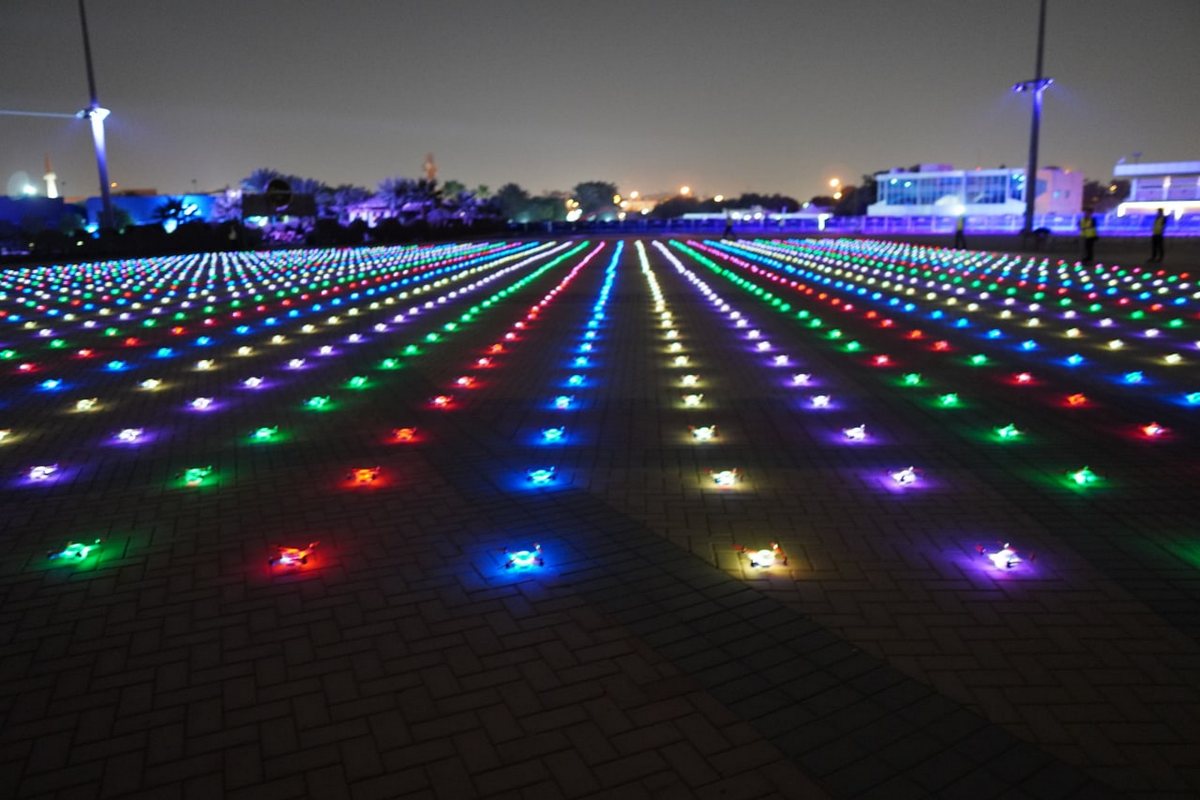Drone show accidents: They’re captivating displays of technology, but things can go wrong. From spectacular malfunctions to near misses, the potential for accidents is real. This guide explores the various causes, consequences, and preventative measures surrounding these increasingly popular events, offering insights for both enthusiasts and professionals.
We’ll dive into the different types of accidents, from simple malfunctions to catastrophic failures, examining the role of technology, human error, and environmental factors. We’ll also look at safety regulations, post-accident procedures, and the legal and financial implications. Understanding these aspects is crucial for ensuring safe and successful drone shows.
Drone Show Accidents: A Comprehensive Overview

Drone shows, while visually spectacular, carry inherent risks. Understanding these risks, implementing robust safety measures, and establishing clear post-accident procedures are crucial for ensuring the safe and successful operation of these events. This article delves into the various aspects of drone show accidents, from their causes and consequences to preventative measures and post-accident protocols.
Types of Drone Show Accidents
Drone show accidents can range from minor malfunctions to catastrophic failures. Common causes include software glitches, GPS interference, pilot error, and adverse weather conditions. Accidents can manifest as collisions between drones, individual drone malfunctions leading to crashes, fires caused by battery failures, or complete loss of control over multiple drones. The severity varies widely, from minor damage to significant property damage or even injury.
| Type | Cause | Severity | Impact |
|---|---|---|---|
| Collision | Software glitch, GPS interference, pilot error | Minor to major damage | Drone damage, potential for show disruption |
| Malfunction (single drone) | Hardware failure, battery issue | Minor to major damage | Drone loss, potential for minor show disruption |
| Fire | Battery failure, electrical short | Major | Drone loss, potential for significant property damage or injury |
| Loss of Control (multiple drones) | GPS interference, major software failure, pilot error | Major to catastrophic | Multiple drone losses, significant show disruption, potential for injury or property damage |
Safety Regulations and Protocols
Stringent safety regulations and protocols are paramount. Many countries have specific regulations regarding drone operation, including licensing requirements for pilots, operational airspace restrictions, and safety standards for drone design and maintenance. Successful drone show companies often employ rigorous pre-flight checks, redundant systems, and real-time monitoring to mitigate risks. Pilot training and certification are essential, ensuring pilots possess the necessary skills and knowledge to handle various scenarios.
Regulations vary significantly between countries, with some having stricter requirements than others. For instance, the FAA in the US has different licensing and operational requirements compared to the CAA in the UK.
Technological Factors Contributing to Accidents, Drone show accident
Technological limitations and vulnerabilities in drones can significantly increase accident risk. GPS interference or signal loss can lead to navigation errors and collisions. Software glitches and hardware failures can cause unpredictable behavior, potentially resulting in crashes or uncontrolled flight.
- Improved GPS redundancy and fail-safes.
- More robust software design and testing.
- Enhanced hardware reliability and redundancy.
- Real-time health monitoring systems for drones.
- Development of anti-collision systems.
Human Error and its Role in Accidents
Human error, including pilot error, inadequate planning, or poor communication, frequently contributes to drone show accidents. For example, a pilot failing to properly assess wind conditions or neglecting pre-flight checks can have devastating consequences.
- Thorough pre-flight checklist completion.
- Comprehensive risk assessment and mitigation planning.
- Effective communication protocols between pilots and ground crew.
- Regular pilot training and proficiency checks.
- Emergency response plan in place and practiced regularly.
Environmental Factors

Weather conditions and environmental obstacles significantly impact drone show safety. Strong winds, rain, or fog can compromise drone stability and control, increasing the likelihood of accidents. Buildings, trees, and other obstacles can pose collision risks. Operating in complex environments requires careful planning and risk mitigation.A typical drone show environment might include a large open area, potentially near buildings or trees.
Wind conditions are a major concern, as are potential obstacles like power lines or light poles. The presence of spectators also needs to be factored into the risk assessment.
Post-Accident Procedures and Investigations
Following a drone show accident, a systematic investigation is crucial. This involves securing the accident site, collecting data from affected drones, interviewing witnesses, and analyzing flight logs. Data recovery from damaged drones is critical in determining the root cause.
- Secure the accident site and ensure the safety of personnel.
- Collect data from affected drones (flight logs, sensor data).
- Interview witnesses and gather information.
- Analyze the collected data to determine the root cause.
- Prepare a comprehensive accident report with recommendations for preventing future incidents.
Insurance and Liability
Drone show operators should secure appropriate insurance coverage to mitigate financial risks associated with accidents. This insurance should cover potential damages, injuries, and legal liabilities. Organizers and participants share liability depending on the nature of their involvement. Accidents can lead to significant legal ramifications, including lawsuits and penalties. Insurance policies vary in coverage and cost, so operators should carefully consider their specific needs and risks when selecting a policy.
Closure

Ultimately, preventing drone show accidents requires a multi-faceted approach. By understanding the contributing factors—from technological limitations to human error and environmental challenges—and by implementing robust safety protocols and regulations, we can significantly reduce the risk. This proactive approach ensures the continued enjoyment of these breathtaking spectacles while prioritizing safety.
Drone show accidents, sadly, are a real possibility, highlighting the need for rigorous safety protocols. To see a spectacular, and hopefully accident-free, example of what’s possible, check out the amazing visuals of the niagara falls drone show ; it’s a great example of how impressive, and safe, these shows can be when planned correctly. Learning from past mishaps helps ensure future drone shows are both stunning and secure.
Questions Often Asked
What is the most common cause of drone show accidents?
Pilot error, including poor planning and inadequate response to unexpected events, is frequently cited as a major contributor.
What kind of insurance do drone show operators need?
Drone show accidents, unfortunately, aren’t uncommon. Sometimes, technical glitches cause major problems, like what happened in a recent spectacular failure; check out this report on the orlando drone show malfunction to see what can go wrong. Learning from these incidents is key to improving safety protocols and preventing future drone show accidents.
Operators typically need liability insurance to cover potential damages or injuries caused by their drones. The specific coverage needed varies depending on the scale and location of the show.
Drone show accidents, sadly, aren’t unheard of. These spectacular displays rely on precise coordination, and when things go wrong, the results can be dramatic. For a deeper dive into the causes and consequences of these mishaps, check out this insightful article on a specific drone show accident: drone show accident. Learning from past incidents helps improve safety protocols and ensures future shows are even more impressive and, most importantly, safe.
Understanding drone show accident prevention is crucial for the industry’s continued growth.
Are there international standards for drone show safety?
While there’s no single global standard, many countries have their own regulations and guidelines for drone operation, often focusing on aspects like airspace restrictions and pilot certification.
What happens after a drone show accident?
A thorough investigation usually follows, involving data recovery, witness statements, and analysis of the event to determine the cause and implement preventative measures.
